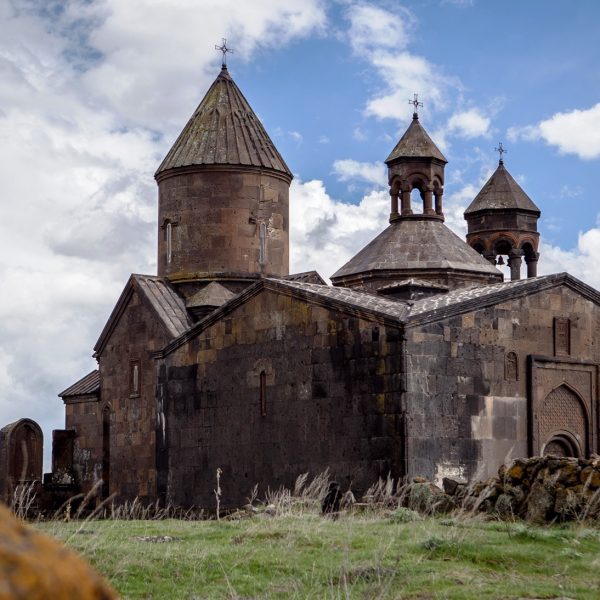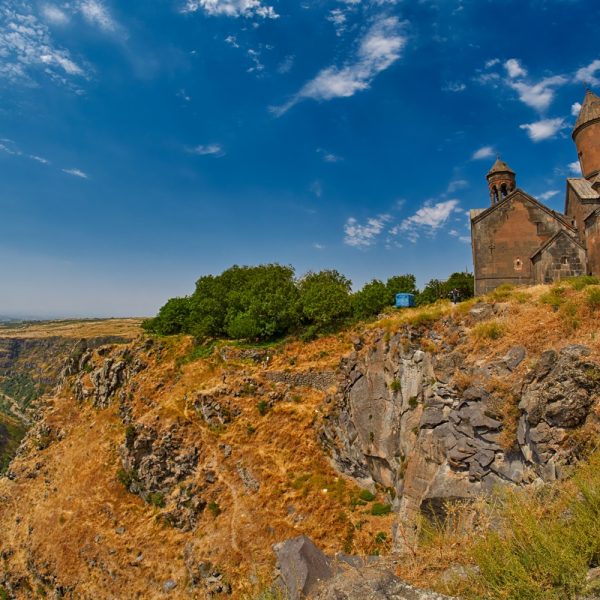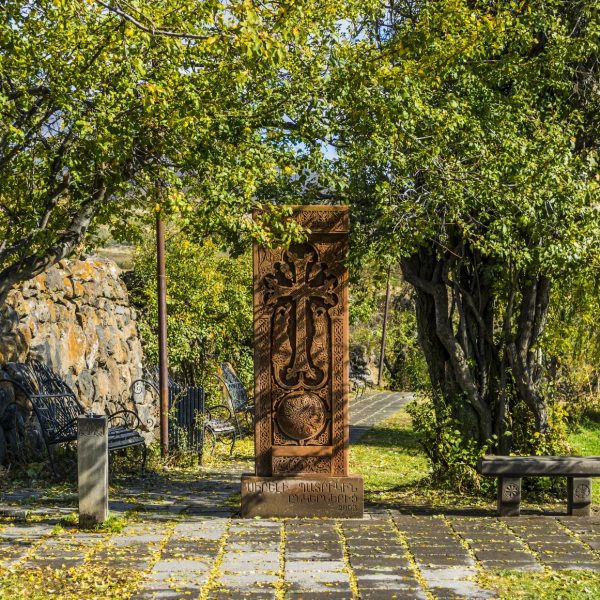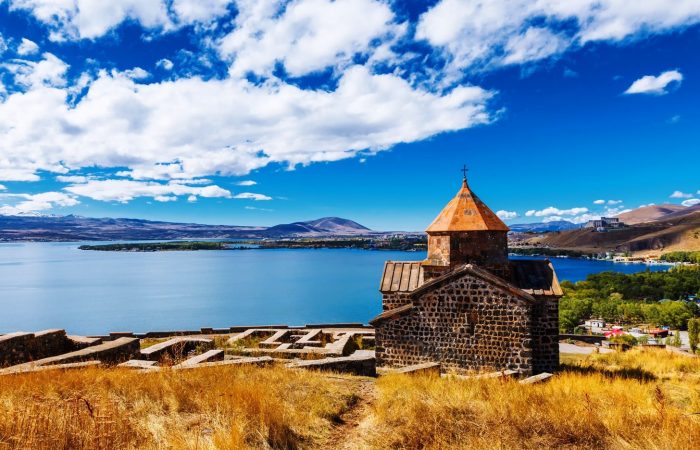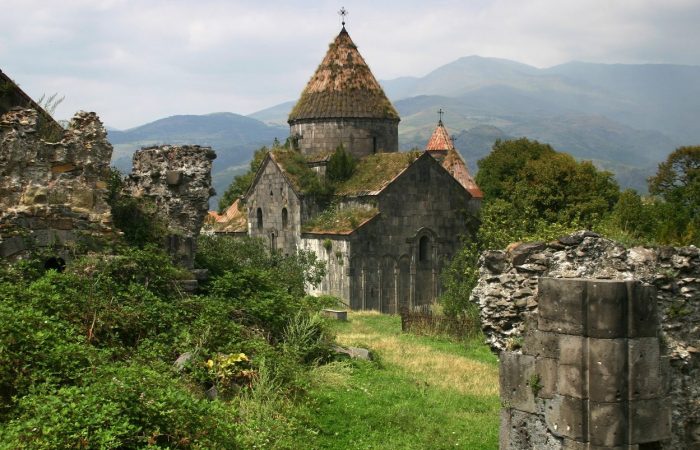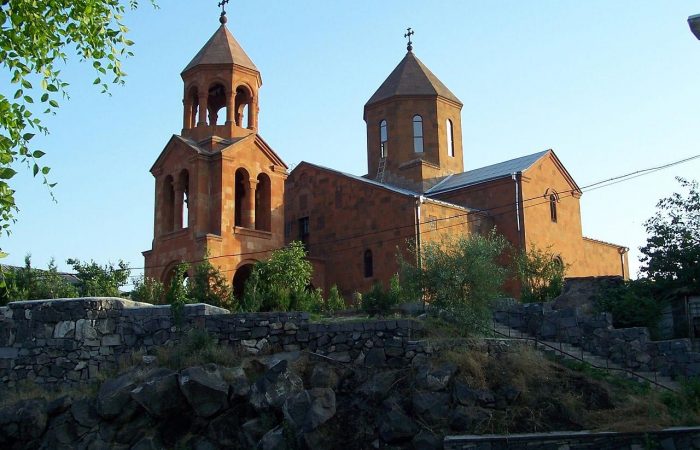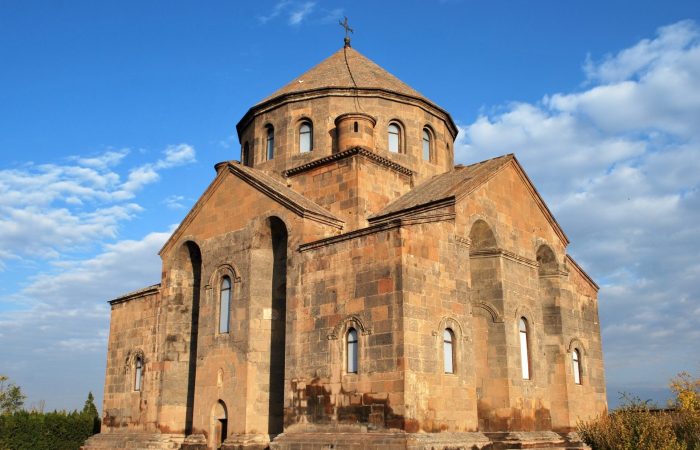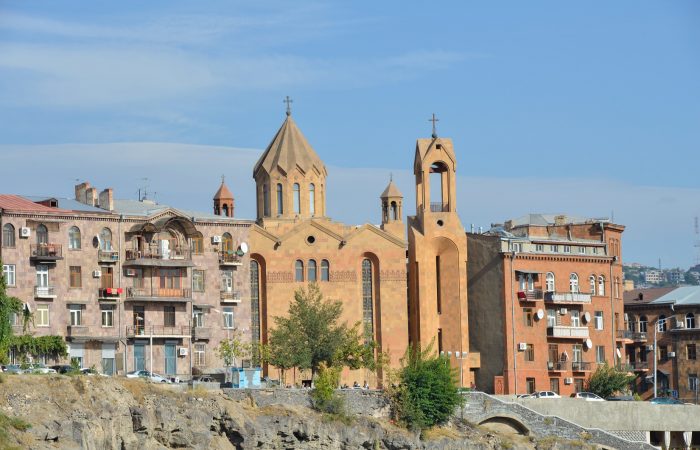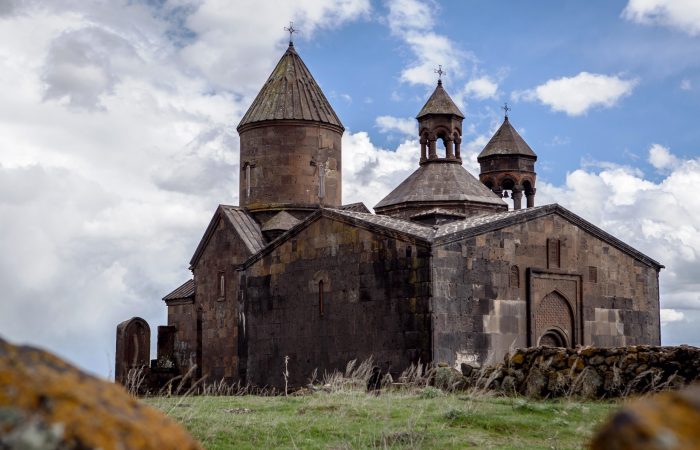Sahmosavank Monastery: History
According to Simeon Erevantsi (18th century), the Monastery of Saghmosavank was built in the 4th century upon the initiative of Saint Grigor Lusavorich (Gregory the Illuminator). This version, however, doesn’t go beyond the limits of a legend.
The Monastery of Saghmosavank was built in 1215 by the princely family of Vachutyans. The overall constructution of the complex was completed in 1250. Since the 13th century a medieval higher school used to operate in the monastery. Notably, Armenian philosopher, educator and church figure taught (though for a short time) in the school of Saghmosavank monastery. Other than that, such prominent figures as Armenian historian, geographer and philosopher Vardan Areveltsi, writer, scholar and composer of sharakans Gevorg Skevratsi, Armenian historian Zakaria Kanakertsi and many others lived and worked in the monastery.
Saghmosavank was also a significant center for calligraphy. Several manuscripts written and copied there have been preserved. Of interest are the following works; the “Homily” copied in 1188 by scribes Marcos and Mkhitar (they were brothers), “Mashtots” copied in 1436 by priest Karapet and a number of other manuscripts.
Saghmosavank Monastery: Complex
The complex of Sahgmosavank Monastery includes the Church of Saint Zion, gavit, repository of manuscripts and Church of Saint Astvatsatsin (Holy Mother).
Saint Zion Church
Saint Zion Church was built in 1215 by Prince Vache Vachutyan. After the construction of the church was completed Vache gifted it to the village. The Church of Saint Zion is cruciform from the inside and rectangular from the outside. It belongs to the domed hall type with two-story annexes.
Gavit of Saint Zion Church
The gavit of Saint Zion Church was constructed in the first quarter of the 13th century by Vache Vachutyan. The four column gavit can be found to the west of the church. The central part of the gavit’s ceiling features a tent-like roof and a skylight with a six column rotunda rising on it. The other parts of the gavit’s roof include interesting and unique solutions (mirror, barrel, crossing vaulting and so on). It should be said that the roof structure of the gavit is a unique sample of Armenian architecture. The large two windows of the gavit’s southern façade are not less impressive, neither is the tall western entrance with a horseshoe shaped arch.
Repository of Manuscripts
The repository of the manuscripts was built in 1255 by Prince Kurd Vachutyan and his wife Khorishah in the memory of their daughter who had passed untimely. The repository was built between Saint Zion Church and the gavit. The roof of the repository, which comes with crossing arches, has a complicated structure. The eight-column rotunda built on it makes Saghmosavank appear with a three-dome silhouette.
Saint Astvatsatsin Church
The Church of Saint Astvatsatsin (Holy Mother) was built in in 1235 and was renovated in 1669. There is only one way to get to the church, and it is through the repository. The church is thought to have functioned as a depository for the church’s valuable plate.
In the territory of the monastery there are various tombstones, some of which come in form of richly carved khatchkars (cross-stones).
Lastly, Sahgmosavank Monastery greatly suffered from the disastrous earthquake of 1988. The monastery’s renovation works were completed in 2000 and presently, it gloriously stands in the middle of the beautiful nature around it.

